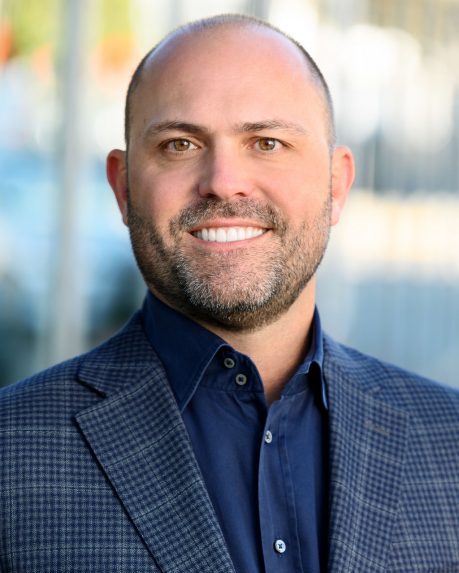
John Gilchrist, Founder of ATALYST Financial Group
For our latest interview in the Expert Insights series, we had the pleasure of talking to John Gilchrist, Founder of ATALYST. Mr. Gilchrist has over 25 years of experience in banking, real estate, and accounting and has worked for public and private multinational firms and has experienced success as an entrepreneur.
He began his career as a certified public accountant with Arthur Andersen where he specialized in the real estate and communications industries. After that, he joined Star Telecom where he was promoted to the role of Chief Financial Officer of European Operations. Mr. Gilchrist later transitioned to banking when he joined Lehman Brothers in London, where he specialized in cross-border merger and acquisition advisory, capital raises and debt restructuring. Read on to find out more about his experience and thoughts on the CRE industry.
Q: Can you tell us about your background and why/how you chose a career in CRE?
My grandfather developed a retail building and an industrial building in the 50s. He lived with us during my formative years, so I have always been around the CRE space. I planned to work in CRE industry straight out of college. I even did a college internship with a multifamily operator in Orange County one summer. The nation was just coming out of the 90-91 recession and still dealing with the hangover from the S&L crisis, so the CRE space was incredibly challenging in those years. As a result, I shifted my focus to accounting. I earned an undergraduate degree in accounting from USC in 1993 and a master in business taxation in 1994. I was recruited directly out of school to work for a big six accounting firm, Arthur Andersen. At Arthur Andersen, I navigated to a team that covered real estate companies and REITs. Eventually I took an investment banking job with Lehman Brothers where I expanded my transaction execution capabilities. Now with my own company, I’ve been able to combine the skills learned throughout my career and apply them to an industry that I’ve always wanted to be involved in.
Q: What are your thoughts on the CRE market in the U.S. today in terms of trends and challenges?
There are so many factors playing into the markets today, it is difficult to nail down just a few issues a concise manner.
The COVID-19 Virus is going to dominate the headlines for the remainder of 2020. The prevailing thought is that we have to get back to normal quickly or the entire system will fail. A drawn out quarantine will lead to massive commercial mortgage defaults. Even with modest leverage, CRE owners will need reprieve. This is easier said than done. Agencies are responding with programs that offer forbearance, so long as certain conditions are met. The CMBS market has yet to come up with any type of solution through the time of this writing, so borrowers are anxious. Generally, new financing and refinancing has ground to a halt. Our understanding is that the stimulus is directed to retailers and business owners. So long as they obtain the stimulus and use it to pay rents, owners should be able to pay outstanding mortgages. This is the best way to avoid a complete meltdown of the financial system.
Before COVID-19, CRE owners the CRE industry has been quite frustrated with new regulation (e.g. rent control, occupancy mandates, alternative energy mandates) and increasing government impact fees. This ties into affordable housing that is one of the hottest topics of discussion in most cities. The problem of affordable housing is a difficult one to solve with many important stakeholders. Many people immediately look to developers to cut rents or sales prices, however we see developers building at historically low margins already. The public needs to understand that prices have increased in part due to higher labor and material costs, building restrictions, government impact fees, and other government mandates. Each situation is specific and local, but there needs to be a balance that allows a developer and investors to make a reasonable profit or all new development will stop and the problem of affordable housing will get worse.
Changing consumer behavior has led to a radical change in retailing and warehousing across the globe. Practically everything imaginable can be delivered directly to the consumer, which has reduced the demand for retail for the foreseeable future. Repurposing the excess retail space will be one of the challenges and opportunities in the upcoming years.
Q: What differentiates the commercial real estate market in Austin from other major markets in the United States?
Real estate is a local business and each market has its own story. Austin is likely the best market in the country for growth opportunity. It is differentiated from other markets because the job growth in Austin is associated with higher paying technology jobs and its overall affordability relative to other technology focused cities. We expect a continuation of the incredible growth trajectory in this market.
Q: How have you seen the industry evolve in the past 25 years you’ve been involved in it?
The biggest change to the CRE business has been driven by changes in technology. Advances continue to change the way people interact, which in turn changes overall real estate needs. This disruption will continue. By way of example, the entire country is telecommuting in response to the COVID-19 lockdown. Space needs for corporate offices had already been reducing, but I expect they will reduce further and telecommuting will increase. Also, banks are shuttering local branches by the hundreds because of the advances in internet banking. I previously discussed how the retail markets have changed with the availability of online commerce.
Q: What is your general assessment for the real estate market in 2020? Have you spotted some interesting market trends?
Interesting market trends include the repurposing excess retail space, an expansion in seniors housing to meet expected increases in demand for aging seniors, and the growth of the for rent housing market.
Q: Do you think there are some lessons from the past few years that you would impart as an absolute must for those looking to get into the CRE industry?
For those looking to get into the CRE industry, I highly recommend that they get involved with some of the industry trade organizations. Many have fantastic training programs and provide valuable industry information. I’m active in Urban Land Institute. Other leading groups include NAIOP and the Mortgage Bankers Association.
Q: Any other insights that you’d like to share?
Capital raising for projects can be challenging in good times and bad times. Our clients leverage off of our experience and relationships to secure the best deals. We have an extensive network of capital sources including mortgage REITs, Wall Street CMBS investment banks, debt funds, domestic and international commercial banks, hedge funds, life insurance companies, and private funds. These sources are capable of funding equity, mezzanine, construction, short and long term debt thus allowing us to arrange all of the required capital for clients.
Over the years we have not only financed the traditional real estate asset classes such as multi family, office, retail, hotels, and industrial but also senior living facilities, land, self-storage, residential development and master planned communities.
Interested in being interviewed for our Expert Insights series? Feel free to reach out to us at [email protected] or check out other articles from our series here.









